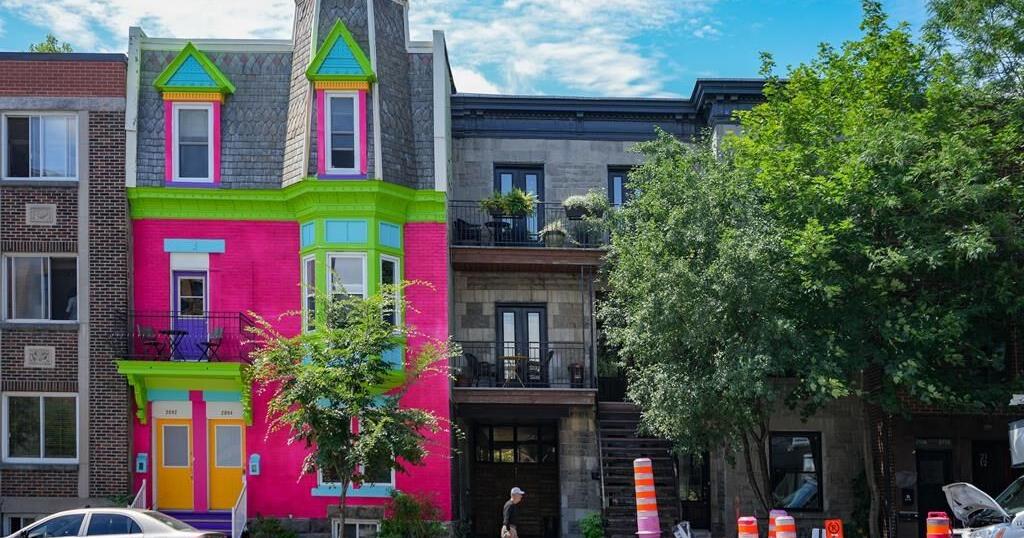MONTREAL – The City of Montreal says the owner of a more than 100-year-old home has violated city rules by allowing it to be painted in neon colours as an ad for telecom company Koodo.
A Toronto-based advertising firm recently transformed the Victorian-style duplex into an oversized Koodo ad by painting it in the company’s chosen palette of hot pink, with accents of lime green, purple, teal and orange.
A sign that had been posted on the facade that read, “There’s joy under this roof. Koodo Internet” was no longer present as of midday Thursday.
City spokesman Simon Charron said the publicity stunt wasn’t authorized and violates city bylaws.
“It is important to note that town-planning regulations prohibit painting brick on the exterior facade of the majority of buildings,” he said in a written message. “Modifications made to heritage buildings are also strictly regulated. In addition, rules govern the place of advertising in the urban landscape.”
Charron said the city will send inspectors to the home and issue a notice of violation to the owner.
A spokesperson for one of the companies behind the ad told The Canadian Press that the campaign was led by Toronto-based firm Camp Jefferson and intends to “create a memorable and cheerful experience for the community.”
“Before launching this activation, we asked for and followed the guidance and instructions provided to us by a representative of the City of Montreal,” wrote Isabelle Bonin of Plus Company, which collaborated on the campaign.
“As per our original plan, we will restore the house to its original condition on July 8 and are continuing to comply with the City of Montreal’s rules and regulations.”
The home is described in a real estate listing as a “Victorian-style duplex on three floors.” A picture of the facade, presumably taken before its transformation, shows it painted in a pale green. The Realtor.ca ad lists its construction date as 1870, although the municipal evaluation says it was built in 1910.
Heritage Montreal also has a problem with the house’s transformation.
“The issue is not the creativity of the colour choices themselves, but how they are used to circumvent the City of Montreal advertising regulations,” the organization wrote in an email.
It said that applying certain paints to masonry can cause damage over time, and that removing or repainting them can be expensive and complicated. “Therefore, while creative colour choices can enhance aesthetics, it is critical to balance creativity with code compliance and consider the long-term impact on building materials.”
This report by The Canadian Press was first published July 6, 2024.





















